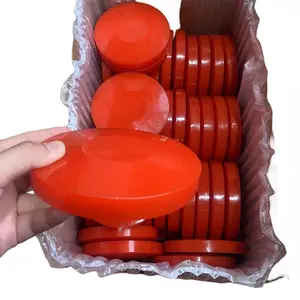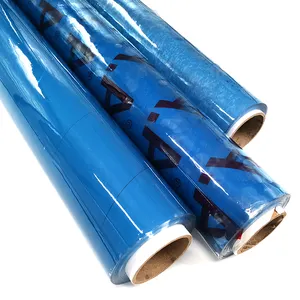Introduction
Plastic sheeting in rolls, a material of remarkable versatility and ubiquity, has significantly transformed various industries with its unique properties and diverse applications. This guide will provide an in-depth understanding of different types of plastic sheeting, including acrylic, polycarbonate, polyethylene, and PVC, each with its unique characteristics and uses. We will also explore the wide-ranging applications of plastic sheeting in different sectors, and how to choose the right type for your needs. Lastly, we will discuss the environmental considerations and the importance of sustainability in the use of plastic sheeting.
The Basics of Plastic Sheeting
Plastic sheeting, also known as plastic film, is a versatile material used in a multitude of applications. It comes in various types, each with unique properties and uses. For instance, acrylic sheeting, renowned for its clarity and strength, is a thermoplastic that can be melted down and molded into any shape, and reheated later without degrading. Polycarbonate, another type, is incredibly strong and clear, making it ideal for applications requiring impact resistance. High-density polyethylene (HDPE) is another type of plastic sheeting known for its versatility and eco-friendliness.
Types of Plastic Sheeting
Plastic sheeting comes in various types, each with unique properties. Acrylic sheeting, known for its clarity and strength, is an ideal substitute for glass. It's resistant to scratches, abrasions, and UV damage. Polycarbonate sheeting boasts strength over 250 times that of glass. It's impact-resistant and can be treated to either transmit or protect against UV rays. High-density polyethylene (HDPE) sheeting is a versatile and eco-friendly option, widely used in items ranging from hard hats to water bottles.
Polyethylene (PE) Sheeting
Polyethylene (PE) sheeting, also known as polythene sheeting, is a versatile plastic film made from petroleum. It's waterproof, yet allows certain gases and flavorings to pass through. It can be clear, translucent, or opaque, and is sold in rolls. Additives can be added to enhance its functionality, such as making it fire retardant, UV inhibiting, anti-static, high strength, and high or low slip. It can be made from virgin grade, BRC approved food grade, or recycled polythene. It comes in various thicknesses, suited to different applications, from light duty uses like dust covers to heavy duty applications in construction or industrial settings.
Polyvinyl Chloride (PVC) Sheeting
Polyvinyl Chloride, or PVC, is a strong synthetic plastics polymer, the third most commonly used material worldwide. PVC is amorphous, allowing it to easily combine with other substances. Depending on the additives used, PVC can exhibit various qualities such as elasticity, impact resistance, and fire retardation. PVC sheeting, available in powder form or granules, is replacing traditional materials like ceramics, metal, and wood in many sectors due to its versatility and durability.
Polycarbonate (PC) Sheeting
Polycarbonate (PC) sheeting is a widely used engineering thermoplastic due to its transparency, excellent toughness, thermal stability, and good dimensional stability. It's used in various applications like compact discs, safety helmets, and headlamp lenses. PC sheeting is formed through the reaction of bis-phenol A with carbonyl chloride. It's available in different grades, including film, flame retardant, and stress crack resistant. However, it has limited chemical and scratch resistance and tends to yellow upon long-term exposure to UV light. These constraints can be overcome by adding the right additives or through a co-extrusion process.
Acrylic Sheeting
Acrylic, also known as PolyMethyl MethAcrylate (PMMA) or Plexiglass, is a transparent plastic with excellent optical clarity, transmitting 92% of white light. It's highly impact-resistant, up to 17 times more than ordinary glass, and lightweight, making it ideal for precision components. Acrylic is also temperature and chemical resistant, suitable for manufacturing medical manifolds and microfluidics devices. These properties make acrylic sheeting a versatile choice in the realm of plastic sheeting in rolls.
Applications of Plastic Sheeting in Rolls
Plastic sheeting is a versatile material with numerous applications. It can be used for making temporary shelters, covering large containers, waterproofing containers, collecting rainwater, winterizing windows and doors, making temporary home repairs, and even diverting water. It's also useful for creating privacy and blacking out light. Its thickness and size can vary, making it suitable for different uses. Despite not being food-grade, it can be used for emergency water storage. However, it should be stored away from high temperatures to prevent brittleness.
In Construction
Plastic sheeting is a staple in the construction industry. It's used for protecting construction supplies and providing temporary support of structures. The polyethylene material is durable, standing up to pressures and natural elements. It's environmentally friendly and maintains its durability in both hot and cold temperatures. Construction wrap, a type of plastic sheeting, offers high levels of weather and water resistance, and its UV inhibitors block sunlight during construction, leading to energy cost savings.
In Agriculture
Farm plastic, a key component of modern agriculture, is used in virtually every part of the agricultural cycle. It rose to prominence in the 1940s when it was discovered that plastic film could protect crops and produce higher yields. Initially, it replaced glass in greenhouse and tunnel siding, leading to new greenhouse designs and more efficient high and low tunnels. Today, it's used in greenhouses, plastic mulch, irrigation, general supplies, and silage, making the agricultural system more efficient and prosperous.
In Healthcare
Medical plastic materials, including plastic sheeting, play a crucial role in healthcare. They are used in a variety of applications, from packaging and single-use items to implants and prosthetics. Plastic sheeting is ideal for packaging, protecting items like needles or medication from cross-contamination. It's also used in single-use items like tubes, syringes, and gloves, offering an inexpensive and safe alternative to sanitizing equipment. Furthermore, plastic sheeting is used in implants and prosthetics, providing a lightweight, durable, and cost-efficient solution.
In Consumer Goods
Plastic sheets are extensively used in the consumer goods industry. Many recreational vehicles and equipment, once made from wood and metal, now utilize plastic for their construction. Thermoformed plastic sheets have become sleds, ATVs, boats, remote control vehicles, and playground or exercise equipment. Plastic sheets come in a wide variety of colors and won't chip, rust, or warp over time like other materials, making them the perfect choice for recreational equipment.
Choosing the Right Plastic Sheeting
Choosing the right plastic sheeting involves considering factors like physical and chemical properties, manufacturing process, cost, environmental impact, and regulatory compliance. The physical properties such as stiffness, strength, and temperature resistance should match the intended use of the sheeting. Chemical properties like resistance to UV radiation and chemicals determine the product's longevity. The manufacturing process should be compatible with the plastic, and the cost should ensure the final product is cost-effective. The plastic should be recyclable or biodegradable to reduce environmental impact. Lastly, the plastic must meet safety and quality standards for its intended use.
Environmental Considerations and Sustainability
Recycled plastic sheets are an eco-friendly alternative made from plastic waste. They undergo stages of cleaning, processing, and extrusion to form versatile sheets. These sheets are a cost-effective alternative to traditional materials like wood, steel, and aluminium. Using recycled plastic sheets not only meets your needs but also contributes to environmental protection. Choosing recycled plastic sheets for your projects can result in long-term savings and helps in protecting our planet.
Conclusion
In conclusion, plastic sheeting in rolls is a versatile material that has transformed various industries due to its unique properties and wide-ranging applications. Whether it's acrylic's optical clarity, polycarbonate's toughness, polyethylene's versatility, or PVC's durability, each type of plastic sheeting offers unique benefits. Its applications span from construction to agriculture, healthcare, and consumer goods, demonstrating its versatility. However, choosing the right plastic sheeting requires careful consideration of factors like physical and chemical properties, cost, and environmental impact. As we move towards a more sustainable future, the use of recycled plastic sheets offers a promising alternative, contributing to environmental protection while meeting our needs. The versatility and adaptability of plastic sheeting in rolls make it an indispensable material in our modern world.








































 浙公网安备 33010002000092号
浙公网安备 33010002000092号 浙B2-20120091-4
浙B2-20120091-4